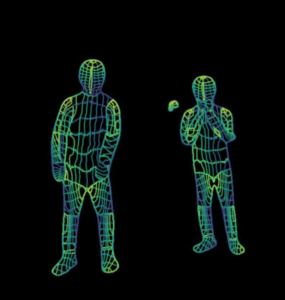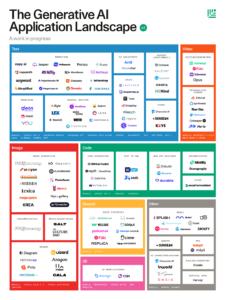
EDACafe Editorial Roberto Frazzoli
Roberto Frazzoli is a contributing editor to EDACafe. His interests as a technology journalist focus on the semiconductor ecosystem in all its aspects. Roberto started covering electronics in 1987. His weekly contribution to EDACafe started in early 2019. EDA Q3 2022 numbers; new PCB SI tools; chiplet description standard; FPGA applications; WiFi-based imagingJanuary 26th, 2023 by Roberto Frazzoli
Tech giants have been in the news over the past few days for a wave of workforce reductions: the list includes Alphabet (Google), Amazon, Microsoft, Meta (Facebook), and IBM. In at least two cases, these cost-cutting moves are accompanied by new investments in artificial intelligence: Alphabet reportedly plans to double down on AI, and Microsoft has just announced the third phase of its long-term partnership with OpenAI through a multiyear, multibillion dollar investment. Let’s now move to this week’s news roundup, starting with some EDA updates. EDA industry Q3 2022 numbers According to the latest report from the ESD Alliance, the Electronic System Design industry revenue increased 8.9% from $3,458.2 million in Q3 2021 to $3,767.4 million in Q3 2022. The four-quarter moving average, which compares the most recent four quarters to the prior four, rose 13.4%. Exceptions to these good results are the Semiconductor Intellectual Property (SIP) product category, with a 1% revenue decrease, and the Japan region with an 8.5% revenue decline. The EMEA region (Europe, Middle East, and Africa) reported just a 0.2% increase in Q3 2022. New PCB signal integrity tools from Keysight and Avishtech Keysight has introduced the Electrical Performance Scan (EP-Scan), a new high-speed digital simulation tool that supports rapid signal integrity analysis for hardware engineers and printed circuit board designers. According to the company, uncertainty about the length of the SI analysis phase performed by SI specialists creates a bottleneck in the PCB design cycle and delays time-to-market. EP-Scan addresses SI analysis bottlenecks by giving hardware designers diagnostic tools to correct designs earlier and meet development schedules. Avishtech has launched two new low-cost toolsets, Gauss SI and SI Pro, to rapidly construct PCB stackups and simulate for impedance and loss. According to the company, up until now these capabilities were only available to large corporations, who could afford very expensive software, whereas Gauss SI and SI Pro enable every board designer and engineer to specify their stackup and design for impedance and signal integrity.
Open Compute Project Foundation and JEDEC to develop a chiplet description standard The new collaboration between the Open Compute Project Foundation and JEDEC is currently focused on providing a mechanism to standardize chiplet part descriptions. OCP’s ‘Chiplet Data Extensible Markup Language’ (CDXML) specification will become part of ‘JEDEC JEP30: Part Model Guidelines’ for use with today’s EDA tools. With this updated JEDEC standard, expected to be published in 2023, chiplet builders will be able to provide electronically a standardized chiplet part description to their customers paving the way for automating System in Package (SiP) design and build using chiplets. The description will include information such as chiplet thermal properties, physical and mechanical requirements, behavior specifications, power and signal integrity properties, testing the chiplet in package, and security parameters. People Texas Instruments’ board of directors has selected Haviv Ilan to become the company’s next president and chief executive officer (CEO), effective April 1. Ilan, a 24-year veteran of TI, succeeds current CEO and president Rich Templeton, who will transition out of these roles over the next two months but will remain the company’s chairman. Frank D. Yeary has been appointed as the new independent chair of Intel’s board of directors. This follows Dr. Omar Ishrak’s decision to step down as chair. Ishrak will remain on Intel’s board as an independent director. FPGAs in advanced applications The new DRF3182 Direct RF Processing Module from Mercury Systems, designed for radar and electronic warfare, features Intel’s latest direct RF technology and leverages Intel’s new Stratix 10 AX SoC FPGA. Unlike traditional systems that use analog frequency conversion hardware, direct RF technology allows the direct processing of broadband signals. The module features four 10-bit ADC channels and four 10-bit DAC channels at 51.2 GSPS. Denso is using the AMD (Xilinx) Zynq UltraScale+ multiprocessor system-on-a-chip platform in its new Single-Photon Avalanche Diode (SPAD) LiDAR system, which – according to the company – generates the highest point-cloud density level of any LiDAR system on the market today: over three million points-per-second at 10 frames per-second. The XA Zynq UltraScale+ MPSoCs is used for system monitor functionality to help enable the temperature and overall system to function correctly. Neural networks improve WiFi-based people imaging A research team from Carnegie Mellon University has used a neural network to improve a WiFi-based technique for detecting people in a room and for estimating their pose. The research builds on a preexisting solution called “DensePose”, which allows the creation of ‘stick figures’ by mapping where WiFi signals are blocked by a person’s body. The Carnegie Mellon team developed a neural network that maps the phase and amplitude of WiFi signals to UV coordinates (where U and V are the axes of the 2D texture) within twenty-four regions of the human body – thus generating realistic body shapes, instead of stick figures. The results reveal that the new model can estimate the dense pose of multiple subjects, with comparable performance to cameras- or LiDAR-based approaches. This paves the way for low-cost, broadly accessible, and privacy-preserving algorithms for human sensing. The hardware setup used by researchers consists of three WiFi transmitters and three aligned receivers. For example, using two TP-Link AC1750 WiFi routers, each equipped with three antennas, the total cost of the setup would be around 60 dollars.  Person’s images obtained utilizing WiFi signals as the only input. Source: Carnegie Mellon paper quoted above. Acquisitions Taiwan-based AcBel Polytech, a manufacturer of switching power supplies, will acquire 100% stake in US-headquartered ABB’s Power Conversion division, formerly known as Lineage Power. ABB Power Conversion has a significant presence in the U.S. telecom market. Infinite Electronics, a portfolio of connectivity solution brands, has acquired Bulgin, a UK-based developer and manufacturer of IP66, IP67, IP68 and IP69K connectors and related components for harsh-environment applications. Infinite has also recently entered into an agreement to acquire Cable Connectivity Group (CCG). Microsoft has acquired Fungible, a provider of data processing units (DPUs). Fungible’s composable infrastructure is aimed at accelerating networking and storage performance in datacenters. Navitas Semiconductor, a specialist in gallium nitride and silicon carbide power devices, will acquire the remaining minority interest in its silicon control IC joint venture from Halo Microelectronics. Further reading Market intelligence firm CB Insights has published a research on companies that are developing AI applications based on generative AI. Below is a map of some of these companies, compiled by Sequoia Capital. |
|
|
|||||
|
|
|||||
|
|||||







